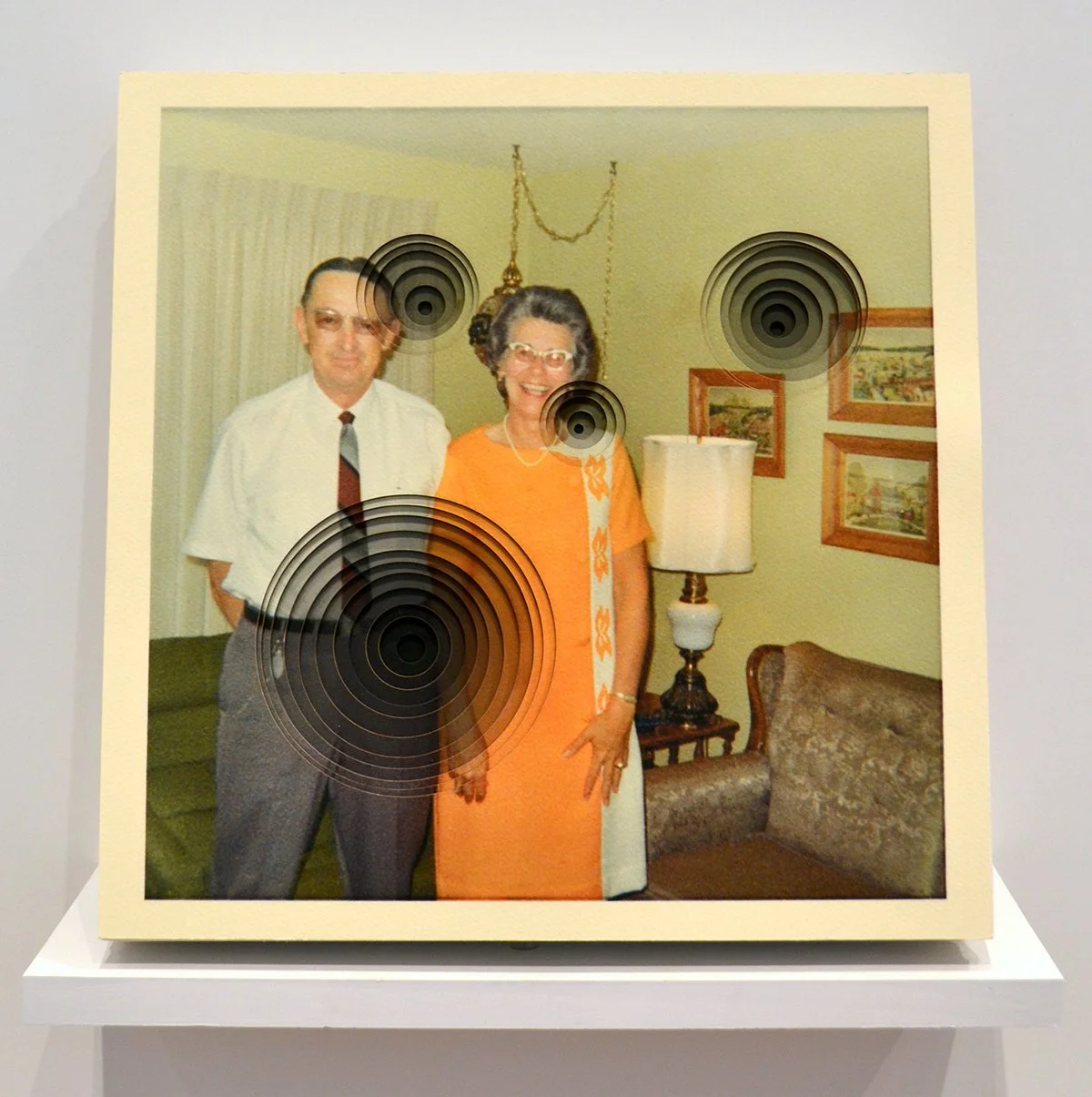Icons of the Diné
Jonathan Nelson: Icons of the Diné
Museum of Anthropology
University of Denver, Sturm Hall 102
September 13, 2019-January 10, 2020
Admission: Free
Review by Noelle Johnson
Jonathan (Johnny) Nelson is a Diné artist who was born and raised in the Four Corners region of New Mexico. Not limited by a specific medium, Nelson creates works of art in ink, paint, digital media, and has even written and illustrated a children’s book. Drawing on his cultural histories, experiences on tribal land, and knowledge of colonization, Nelson uses drawing and digital renderings to depict his notion of the Icons of the Diné people in his solo exhibition at the University of Denver’s Museum of Anthropology.
Installation view of Jonathan Nelson’s Icons of the Diné exhibition. Image by Wayne Armstrong, courtesy of the University of Denver Museum of Anthropology.
The exhibit includes six large, digitally-printed panels hung from the ceiling, a number of framed, preparatory sketches, and a collection of vinyl stickers in a vitrine. In Nelson’s larger practice his work consists primarily of illustration and design. For this project he uses illustration to counter sport mascot caricatures of Native Americans by creating alternative “icons” in a similar, simplified graphic style.
Focusing on the Diné (The People, more commonly known as The Navajo), Nelson highlights six roles tribal members have held historically and currently: serving as “code talkers” during World War II, running marathons, working as shepherds, creating silver jewelry, laboring in uranium mines, and weaving rugs and tapestries.[1] Using a comic book super hero approach, he creates both a character and a stylized title logo for each icon. Starting with preliminary, blue pencil sketches (which are on display in the exhibit), Nelson then inks the drawings and scans them to use as a basis for the final digital designs.
Preliminary sketches for Jonathan Nelson’s Icons of the Diné. Image by DARIA.
Shepherds: Caretakers of Sustenance and Material panel from Jonathan Nelson’s Icons of the Diné exhibition. Image by DARIA.
In the case of the shepherds icon, Nelson represents the traditional Diné practice of sheep-herding with a Native male figure staring into the distance and holding a sheep-tending pole, standing tall and proud. He renders the name “shepherds” in a sports team moniker style with big, blue bubble letters and sheep footprints in various configurations around the name. On the shepherds panel in the exhibition Nelson shows the character and stylized name in several different arrangements, much like an ad designer’s press sheet.
Nelson has in fact designed the icons so they can be printed on posters and made into any size, and he has turned them into the stickers that are on display in the museum which you can purchase from his website. By creating illustrations of Diné icons that are accessible visually through cartoon hero depictions and literally through easy reproduction and affordable stickers, Nelson wants to make Indigenous identities better known and seen, to spark conversation, and to remind people of who the Diné are and that they are still here influencing the world.
Hailing from Wyoming, Noelle Johnson grew up studying art and attending exhibitions along the Front Range. She has spent over ten years in academia, and currently teaches art history. Her interests vary from art of the Ancient Americas to Modern Indigenous artists, with a particular interest in where the boundaries of art and science blur.
[1] The Diné people are one of 562 distinct, federally-recognized tribes. Nelson’s most iconic Diné icon is arguably the Code Talker. Pioneered by Cherokee and Choctaw bilingual people in World War I, the U.S. army used indigenous languages to create codes to relate information. Some of the most famous Code Talkers are Diné /Navajo who served in the U.S. Marine Corps during World War II.
Marathoners are Diné icons of the past and the present. In 1864, 10,000 Diné people were forced by the U.S. government to march more than 350 miles to land that would make up the Diné Reservation. Although their reservation has become smaller due to government “deals” and theft, and much of it is uninhabitable, the Diné have continued to survive there and running is part of their survival story. They have some of the longest, most extreme marathons in the world. Numerous films and documentaries feature their training, the desert terrain, and Diné students who run to earn scholarships and future opportunities.
The Uraniminers icon depicts the Diné people’s role in uranium mining. Some of the largest uranium mines in the U.S. are located on and near the Diné /Navajo Reservation. Since the 1944 Manhattan Project, numerous Indigenous people have worked in the mines and lost their lives due to uranium exposure. During the early years of mining, the U.S. government did not tell workers about the known risks of uranium and the symptoms of uranium poisoning. Driven by poverty and the need to support their families, many Diné continue to work in the mines today, even despite the mines’ destruction of traditional lands.










